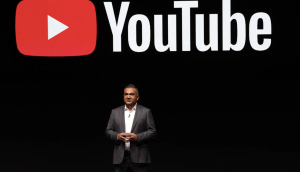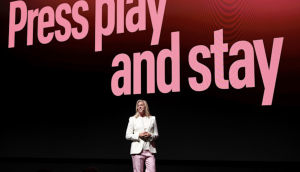London-based Sheila Byfield, global director of consumer insights for Mindshare, tackled the consumer engagement topic at the BBM Canada: Going for the Gold event today with a discussion about recent Mindshare research and the agency’s development of a planning software system that factors in consumer involvement with individual media. Media in Canada asked Byfield for the rules of engagement.
MIC: What is consumer engagement?
Byfield: We’ve recently conducted some research to understand what engagement means to real people. We thought that it’s probably important to talk to people because I don’t think they can easily explain what they’re engaged with. What we’re trying to do is get a fix on is how people engage with different communications channels, whether you see a coaster in a bar, a television ad, or an ad in a shop. How do these types of communications involve people? That’s the focus — trying to understand the roles of 70 or 80 different communications methods. We’ve narrowed it down to four dimensions: affinity, involvement, relevance, and noticeability.
- Affinity, which is all about trust, and believing that this (media) channel is a good way to communicate with people like me. It’s reliable; it’s a source of information.
- Involvement, which is measured by whether people tend to pay more attention to messages in specific places, whether they tell people about things they’ve seen at these places, and whether there’s a level of interactivity that allows you take action to find out more.
- Relevance [asks] ‘is this relevant information that lets me choose between brands?’
- Noticeability. With a big outdoor site, brands do stand out, it’s noticeable. Smaller less conspicuous things are less noticeable. So it’s whether they notice them at all and whether they grab attention.
MIC: How do you place value on an engaged rather than mass audience?
Byfield: What we’re doing is feeding this engagement factor into other research. We’ve designed a [quantitative and qualitative] channel-planning method, and [it] seeks to understand peoples’ engagement with different channels. We talk about channels and their relevance or noticeability, peoples’ affinity or their involvement related to specific brands and then, we add these engagement variables into this research. This means the currency that would come from [the four factors of engagement would then be ascribed an] engagement ratings point. You’d have the standard audience [non-engaged, control group] and then you’d have the people who claim to have affinity, involvement, relevance, noticeability. An engagement GRP [versus] a normal GRP. That’s how we’re doing it.
MIC: What have you found so far? How does engagement influence purchase behaviour?
Byfield: We’ve structured our research to understand the different routes that people take to a purchase decision. If you’re buying a coffee, it’s very quick, spontaneous. It’s low risk and quite habitual. So you could argue that retail media is more important in that type of purchase decision because the advertising for a brand is sort of washing over people, tends to be interruptive. But if you are buying something like high-priced technology or a car, then you’re talking about a very different process – it can take a lot longer; it’s very high involvement.
Channels will play different roles at different stages and be either active or passive, push or pull media, depending on the type of decision-making process you are in and the stage you’re in on that journey. We’re trying to understand the roles of channels in different types of decision-making and then the engagement with those channels to identify the ones that will be most effective.
MIC: Do you have an example where this approach has been used for a client?
Byfield: U.K. mobile phone company Vodafone and their association with Bridget Jones, the movie. It was more like a sponsorship and they did a lot of surrounding activities. Vodafone was in the movie for a tiny period of time and then they had a whole host of different activities around it because (the company) was provided with a license to magnify and amplify the Bridget Jones message associated with Vodafone. All the measures that we looked at – awareness, association with the brand, positive feeling toward the brand and so on – improved with people who had seen both the film and all the other activities versus people who hadn’t done either or had seen only one or the other.























